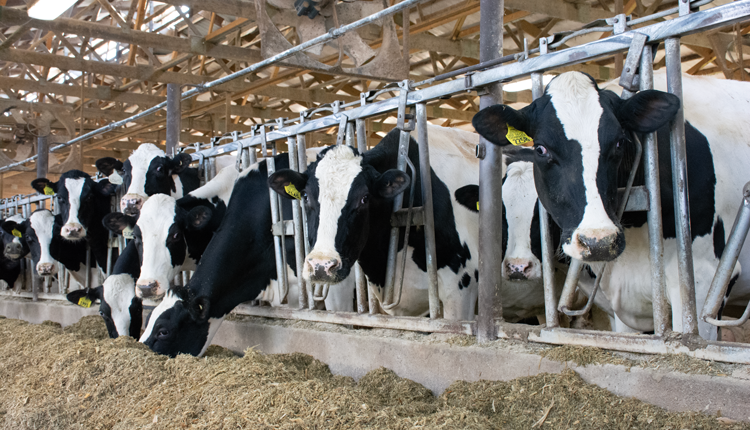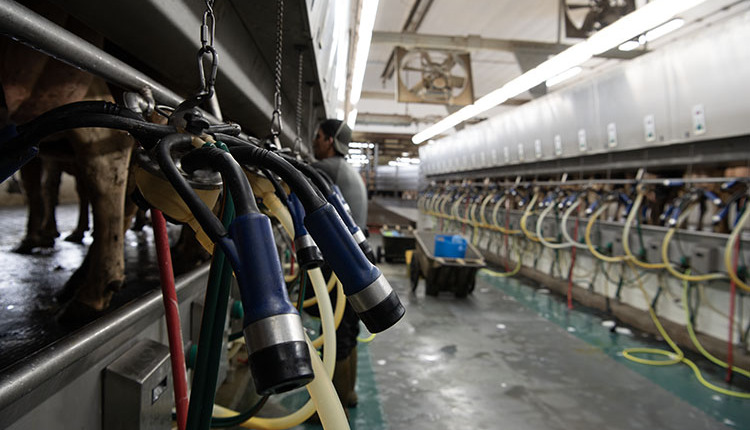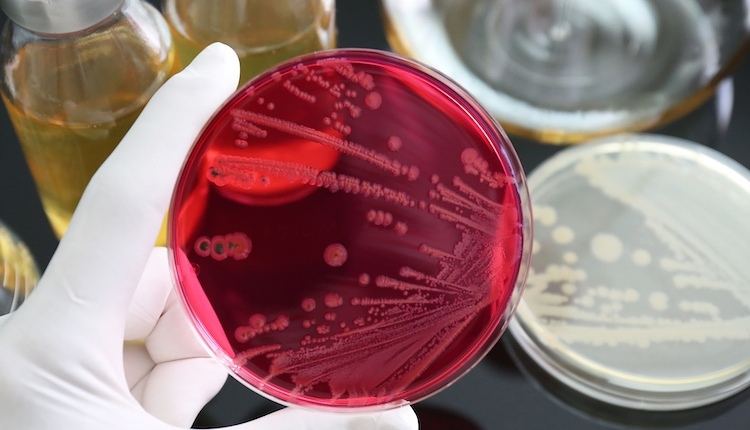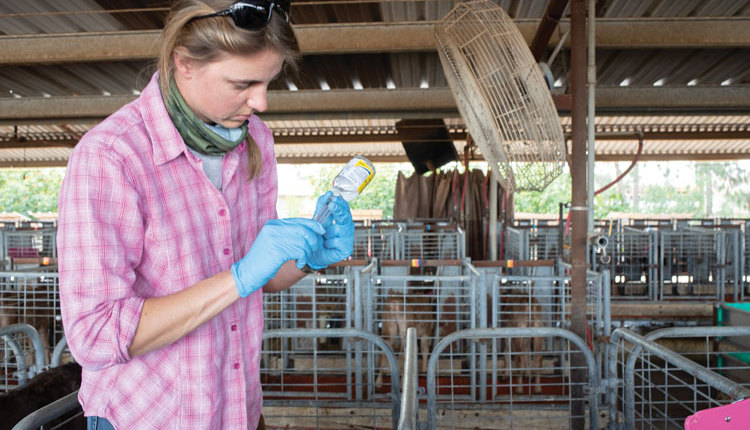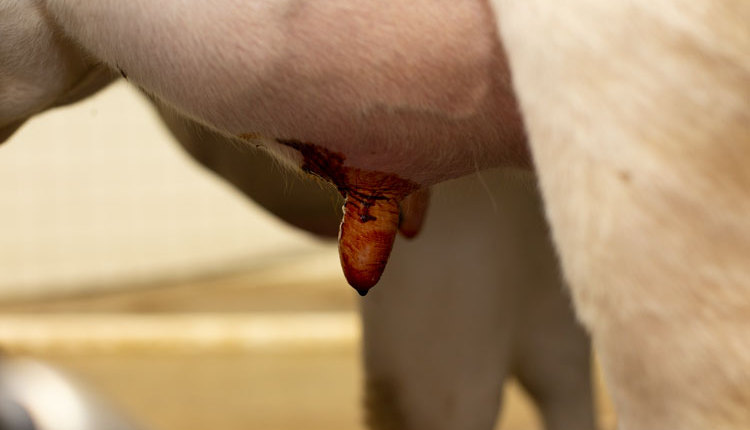By Noritsugu Ade, D.V.M, a veterinarian in Hokkaido Japan. He works for Total Herd Management Services-Japan. Contributing authors were veterinarians: Ichiro Yasutomi, Hokkaido, Japan; Ian Lean, New South Wales, Australia; and Andrew Johnson, Seymour, Wis., U.S.
Clean, dry, and comfortable - those should be the goals of every dairy producer when it comes to cows and their housing conditions. If those goals are met, odds are your dairy can produce quality milk from healthy udders.
But, when we visit dairies, it's amazing to see just how many cows have to deal with conditions that are less than ideal. In some situations, cows have to move about barns with excess manure in free stall barn alleys, while some cows must use muddy yards, pastures, and lanes. These conditions stress the cow and can lead to poor milking hygiene, mastitis, and even foot problems.
While it is obvious to everyone that the cow contaminates her udder and teats while lying in mud, it may be somewhat less obvious how her movements transport manure and mud to her udder. We know it happens, but there never have been any exact reports showing how contaminants move from the legs and tail to the udder. In this study, we tracked the movement of contaminants to prove the need for more effective sanitation.
Tracked movement from legs to udder...
Realizing that older and younger cows have different body structures, we chose to work with first- and seventh-lactation cows to illustrate extremes found in herd situations. In order to simulate unsanitary conditions, we painted the in-side hoof area with red watercolor while the out-side hoof area was painted with blue watercolor. The paint simulated mud and manure that would accumulate on the cows legs after walking through a slurry or mud. Before each cow was painted, she was washed and allowed to dry. The pens also were thoroughly cleaned.
In the first trial, we painted the first 10 centimeters (about four inches) from the ground up. In each of the four trials that followed, we painted an additional 10 centimeters. So, in the last trial, cows had 50 centimeters (19.7 inches) of leg paint on their hind legs.
Painted cows were released and encouraged to walk around the pens. After the cows had moved around for some time, we took photographs of the udder from the side, back, and underneath. From those photos,we made sketches (Figures 1 to 10).Figure 1 shows a seventh-lactation cow with about4inches of "simulated dirt" while Figure 6 illustrates first-lactation cows. As you move to the right, each illustration show what happened when an additional 4 inches of paint was added.
This study clearly illustrates that, if a cow steps into mud or deep manure, natural leg movements carry contaminants to many areas of the udder. That includes areas not normally viewed in some milking situations. Despite having a higher udder, the first-lactation cows contaminate their udders more easily. This holds true with only 4 inches of debris on her legs. It appears that the hoof and dewclaw tend to move more freely under the udder.
As one would expect, the inside area of the hoof and leg contributed to more soiling on the udder. But, as more dirt contamination progressed up the leg, the outside area of the leg began contributing to soiling. Older cows had more soiling from outside leg areas.
Anyone who has ever been hit in the head by a tail can testify that those tails can move mud, dirt, and manure. So, as part of this trial, we painted tails to reflect with red and blue watercolors. The paint reflects contaminants picked up while a cow is lying down in a muddy corral or stall with a dirty aisle or gutter.
First-lactation cows were used in this study. The tails measured 96 centimeter or 37.8 inches. A zone from the tip of the tail to 30 centimeters (11.8 inches) was painted red. Another zone 30 to 60 centimeters up was painted blue. Like the first trial, photos from three angles were taken and sketches were made (shown at right).
The figures clearly show tail sanitation is important. Good sanitation or tail docking are two possibilities for keeping the cow clean. Many people feel the tail is needed for fly control,but there are better alternatives. In fact, the tail is a food source that attracts flies in the first place. Housing improvements,tail docking,or clipping of the tail should be considered to prevent udder contamination.

Dealing with condition less than ideal...
Soiled legs also contaminate bedding sources with bacteria found in the mud and manure. Although the bacteria growth will depend on the bedding sources, it will grow, leading to a greater chance of mastitis infection.
Corrals, pastures, lanes, parlor entrances, barn alleys, and bedding should be kept as clean and dry as possible. High-flow areas like feed alleys and water troughs should be kept especially clean. If ground conditions are bad,the areas need to be fenced off, and, in extreme conditions, the cows need to be kept indoors.
Milking procedures should also be modified with muddy conditions. Don't blindly wipe the udder with lots of warm water. That action will simply spread mud to all the teats.
Under adverse conditions, dairy producers are wasting time and money trying clean and dry udders. It would definitely be better to deal with cleaning teats and teat ends. An even better move would be dealing with the sanitation problems themselves because good sanitation leads to high-quality milk and less mastitis.
See how dirt, mud and manure get moved from feet and legs to the udder in the attached PDF.
Clean, dry, and comfortable - those should be the goals of every dairy producer when it comes to cows and their housing conditions. If those goals are met, odds are your dairy can produce quality milk from healthy udders.
But, when we visit dairies, it's amazing to see just how many cows have to deal with conditions that are less than ideal. In some situations, cows have to move about barns with excess manure in free stall barn alleys, while some cows must use muddy yards, pastures, and lanes. These conditions stress the cow and can lead to poor milking hygiene, mastitis, and even foot problems.
While it is obvious to everyone that the cow contaminates her udder and teats while lying in mud, it may be somewhat less obvious how her movements transport manure and mud to her udder. We know it happens, but there never have been any exact reports showing how contaminants move from the legs and tail to the udder. In this study, we tracked the movement of contaminants to prove the need for more effective sanitation.
Tracked movement from legs to udder...
Realizing that older and younger cows have different body structures, we chose to work with first- and seventh-lactation cows to illustrate extremes found in herd situations. In order to simulate unsanitary conditions, we painted the in-side hoof area with red watercolor while the out-side hoof area was painted with blue watercolor. The paint simulated mud and manure that would accumulate on the cows legs after walking through a slurry or mud. Before each cow was painted, she was washed and allowed to dry. The pens also were thoroughly cleaned.
In the first trial, we painted the first 10 centimeters (about four inches) from the ground up. In each of the four trials that followed, we painted an additional 10 centimeters. So, in the last trial, cows had 50 centimeters (19.7 inches) of leg paint on their hind legs.
Painted cows were released and encouraged to walk around the pens. After the cows had moved around for some time, we took photographs of the udder from the side, back, and underneath. From those photos,we made sketches (Figures 1 to 10).Figure 1 shows a seventh-lactation cow with about4inches of "simulated dirt" while Figure 6 illustrates first-lactation cows. As you move to the right, each illustration show what happened when an additional 4 inches of paint was added.
This study clearly illustrates that, if a cow steps into mud or deep manure, natural leg movements carry contaminants to many areas of the udder. That includes areas not normally viewed in some milking situations. Despite having a higher udder, the first-lactation cows contaminate their udders more easily. This holds true with only 4 inches of debris on her legs. It appears that the hoof and dewclaw tend to move more freely under the udder.
As one would expect, the inside area of the hoof and leg contributed to more soiling on the udder. But, as more dirt contamination progressed up the leg, the outside area of the leg began contributing to soiling. Older cows had more soiling from outside leg areas.
Anyone who has ever been hit in the head by a tail can testify that those tails can move mud, dirt, and manure. So, as part of this trial, we painted tails to reflect with red and blue watercolors. The paint reflects contaminants picked up while a cow is lying down in a muddy corral or stall with a dirty aisle or gutter.
First-lactation cows were used in this study. The tails measured 96 centimeter or 37.8 inches. A zone from the tip of the tail to 30 centimeters (11.8 inches) was painted red. Another zone 30 to 60 centimeters up was painted blue. Like the first trial, photos from three angles were taken and sketches were made (shown at right).
The figures clearly show tail sanitation is important. Good sanitation or tail docking are two possibilities for keeping the cow clean. Many people feel the tail is needed for fly control,but there are better alternatives. In fact, the tail is a food source that attracts flies in the first place. Housing improvements,tail docking,or clipping of the tail should be considered to prevent udder contamination.

Dealing with condition less than ideal...
Soiled legs also contaminate bedding sources with bacteria found in the mud and manure. Although the bacteria growth will depend on the bedding sources, it will grow, leading to a greater chance of mastitis infection.
Corrals, pastures, lanes, parlor entrances, barn alleys, and bedding should be kept as clean and dry as possible. High-flow areas like feed alleys and water troughs should be kept especially clean. If ground conditions are bad,the areas need to be fenced off, and, in extreme conditions, the cows need to be kept indoors.
Milking procedures should also be modified with muddy conditions. Don't blindly wipe the udder with lots of warm water. That action will simply spread mud to all the teats.
Under adverse conditions, dairy producers are wasting time and money trying clean and dry udders. It would definitely be better to deal with cleaning teats and teat ends. An even better move would be dealing with the sanitation problems themselves because good sanitation leads to high-quality milk and less mastitis.
See how dirt, mud and manure get moved from feet and legs to the udder in the attached PDF.
